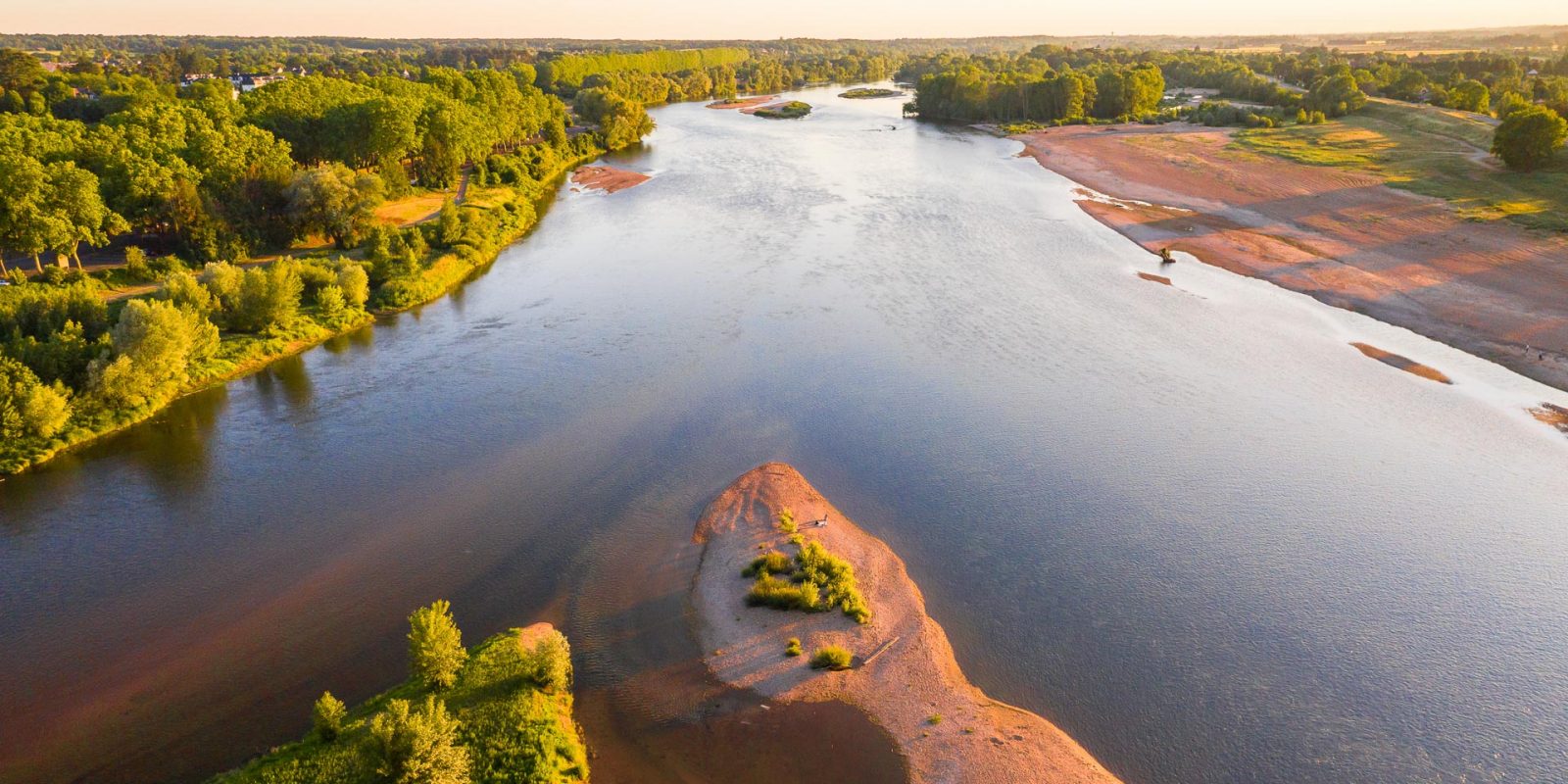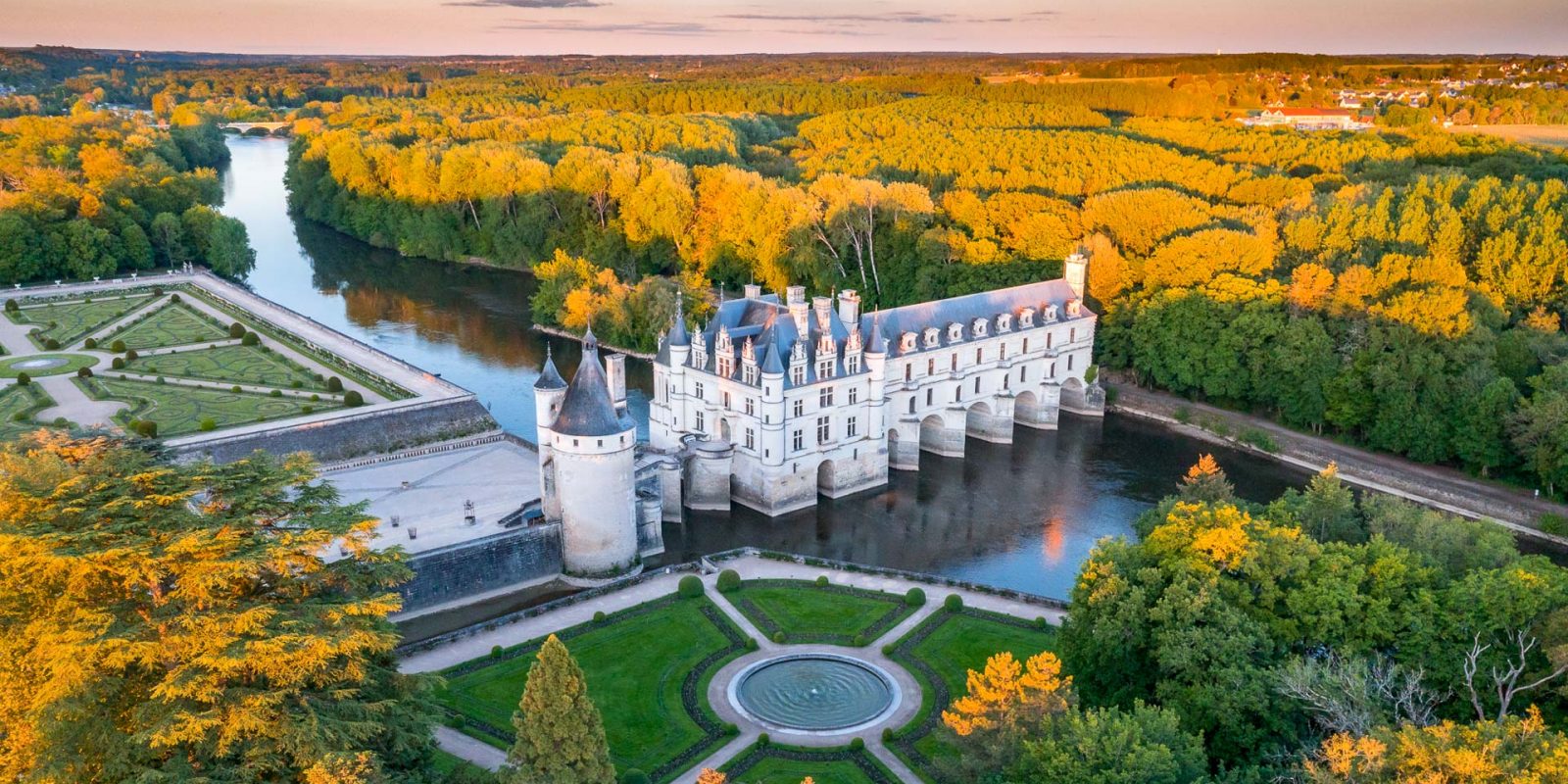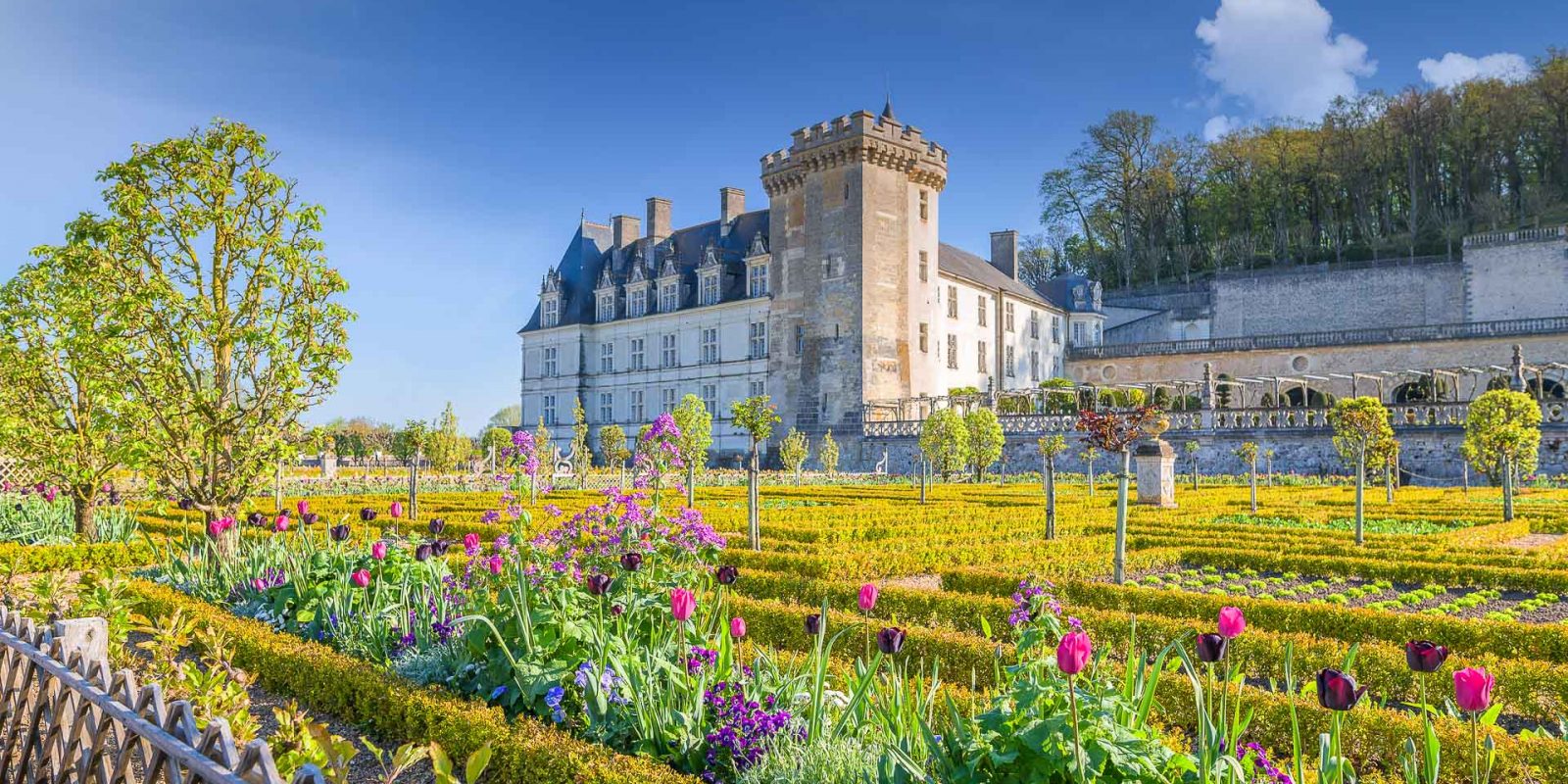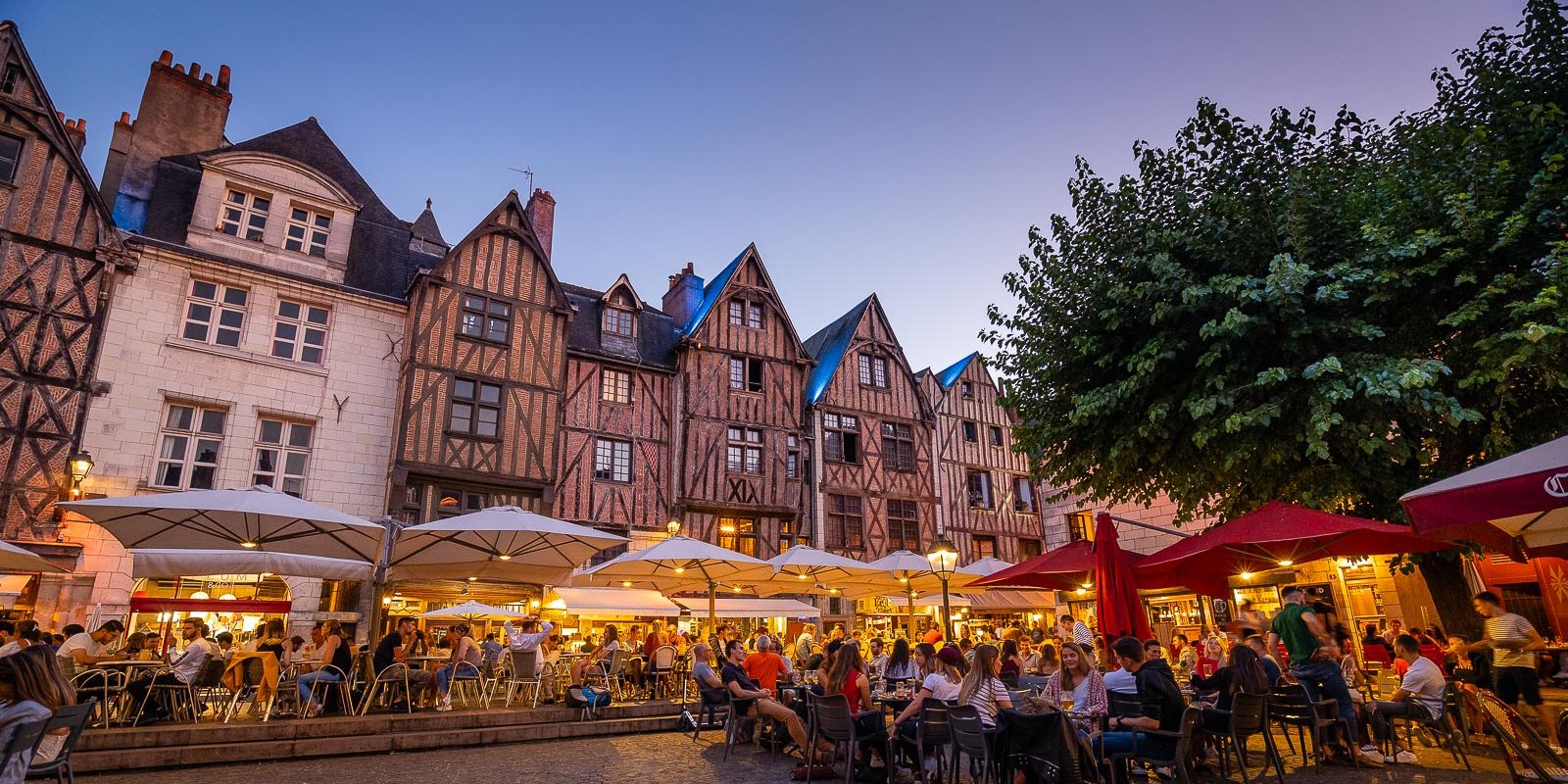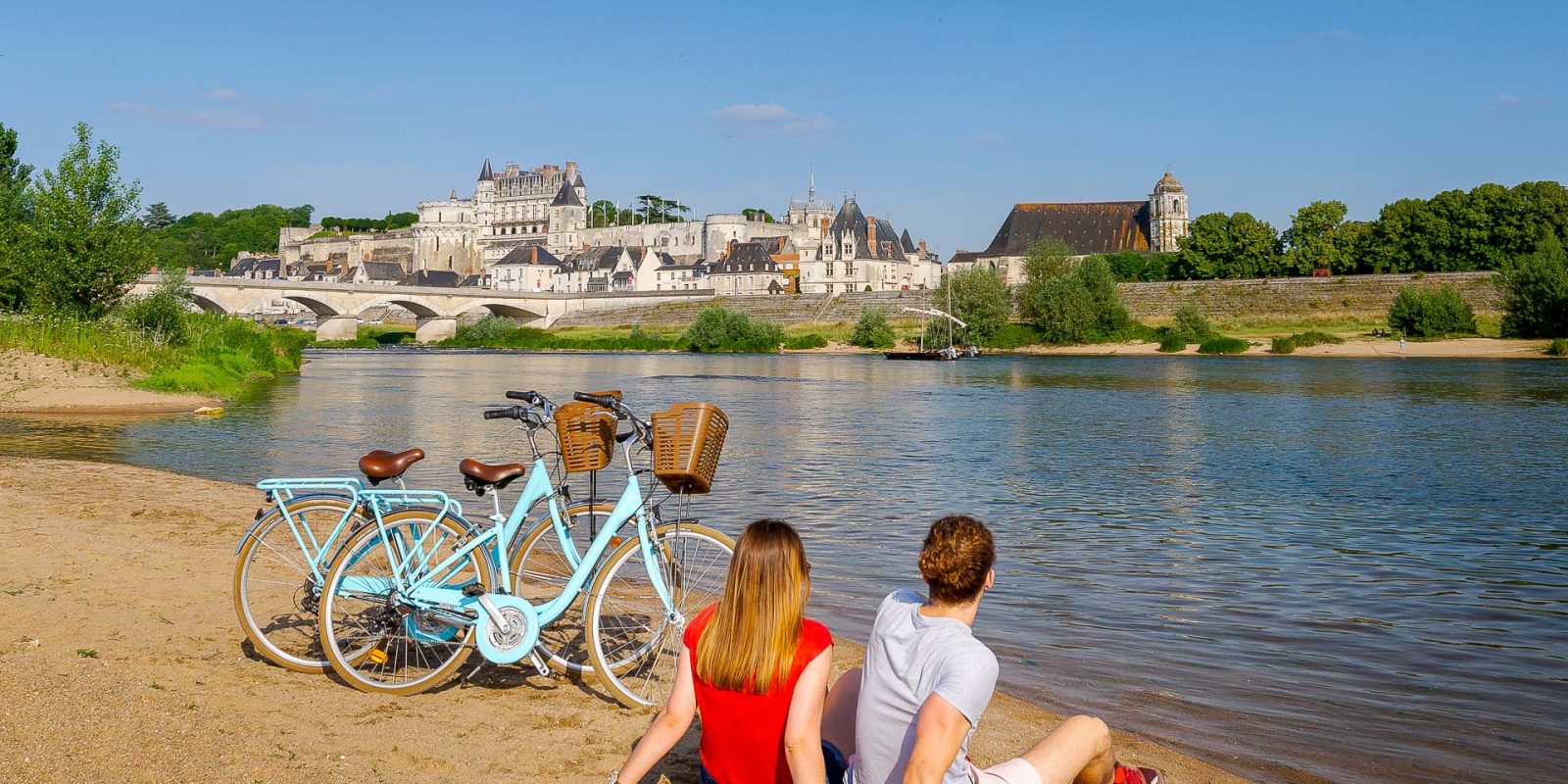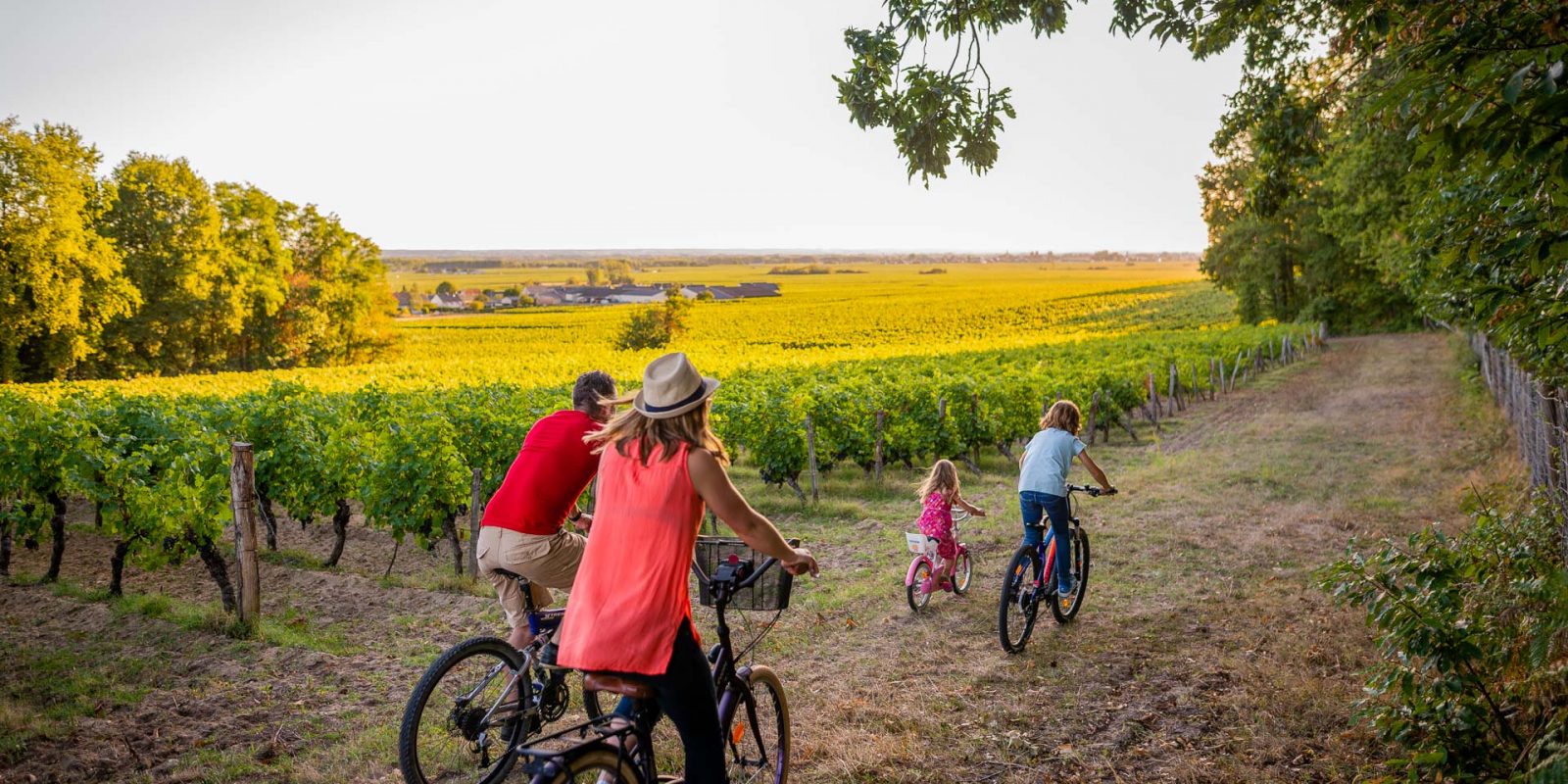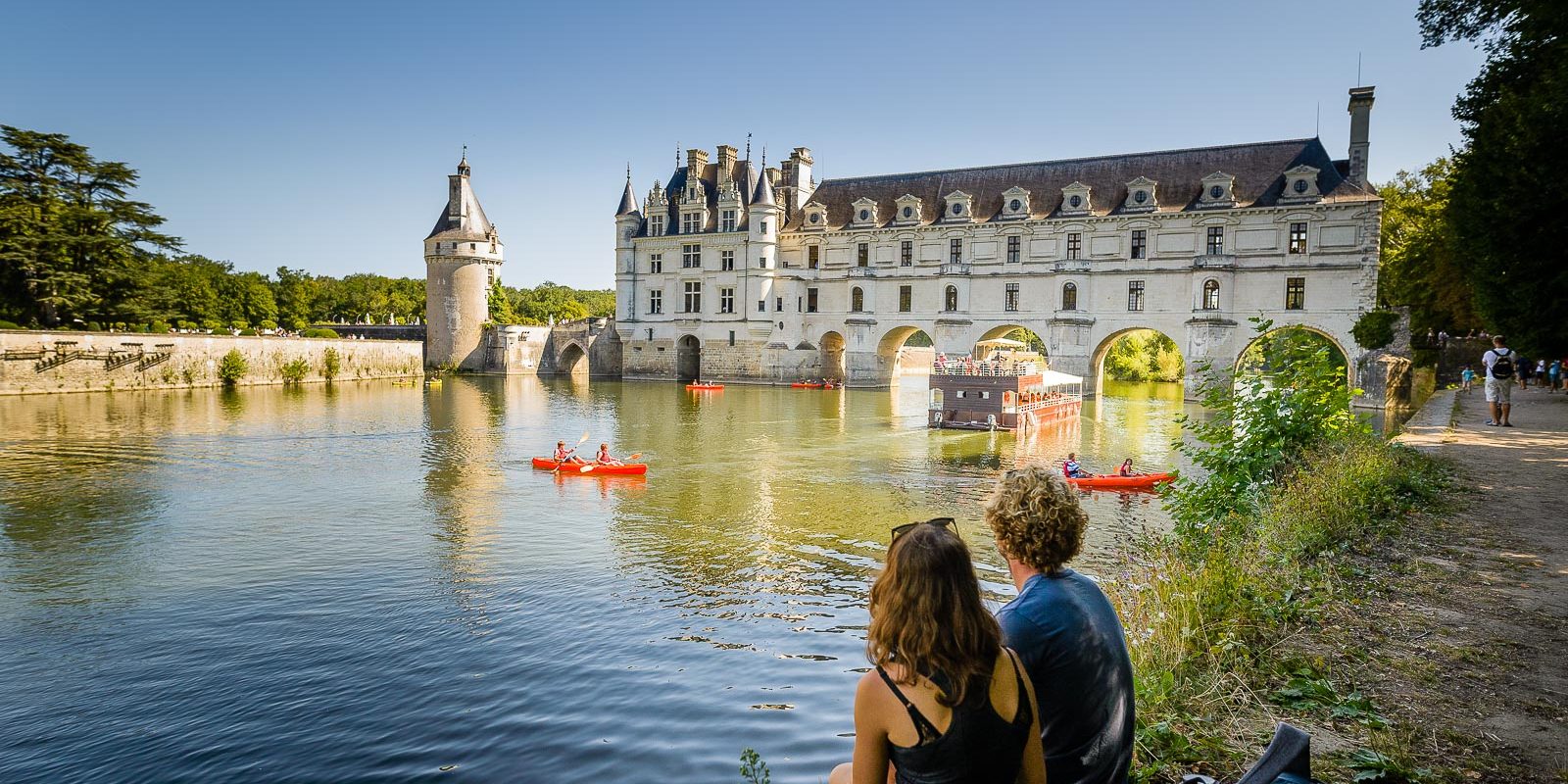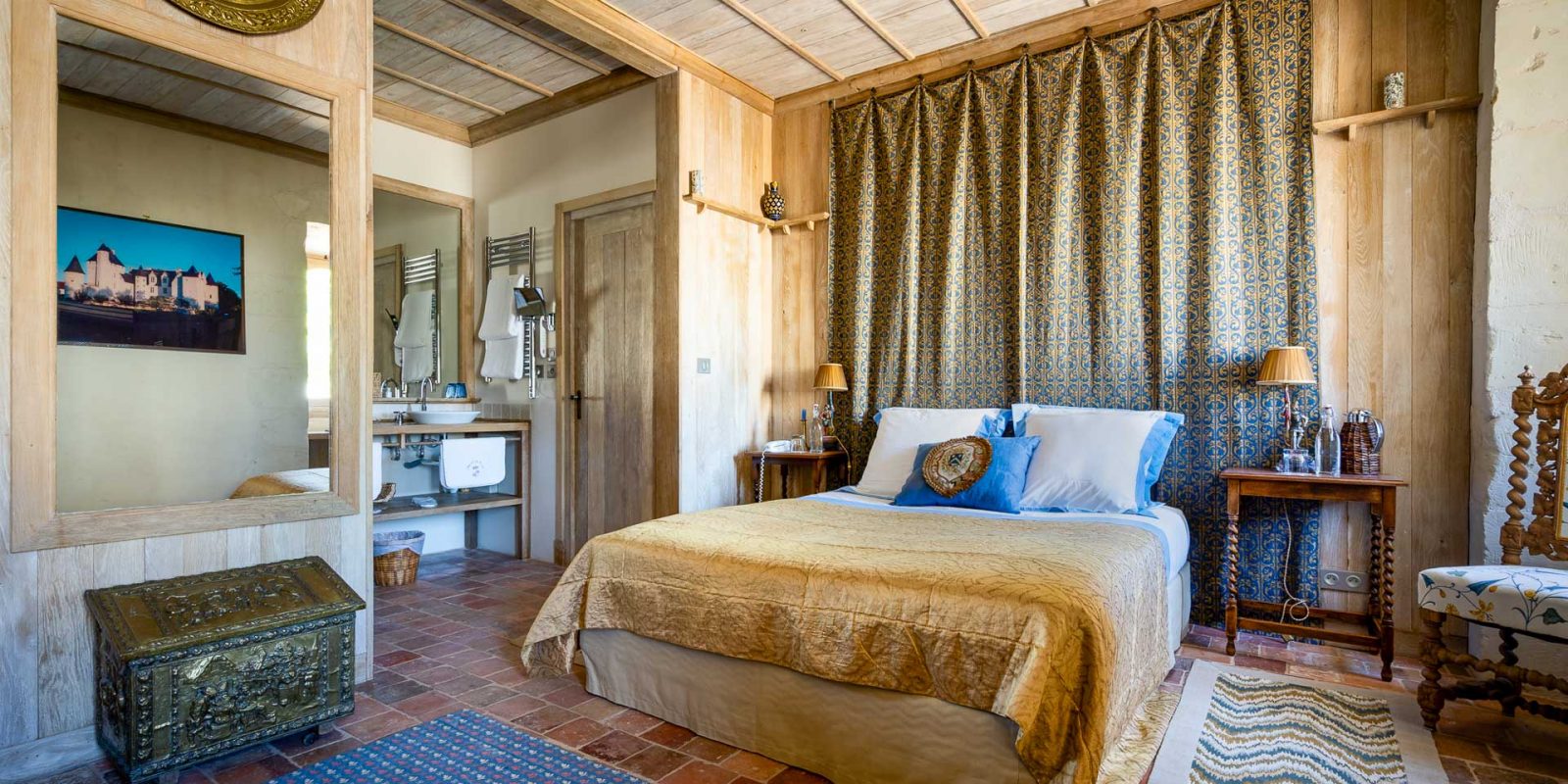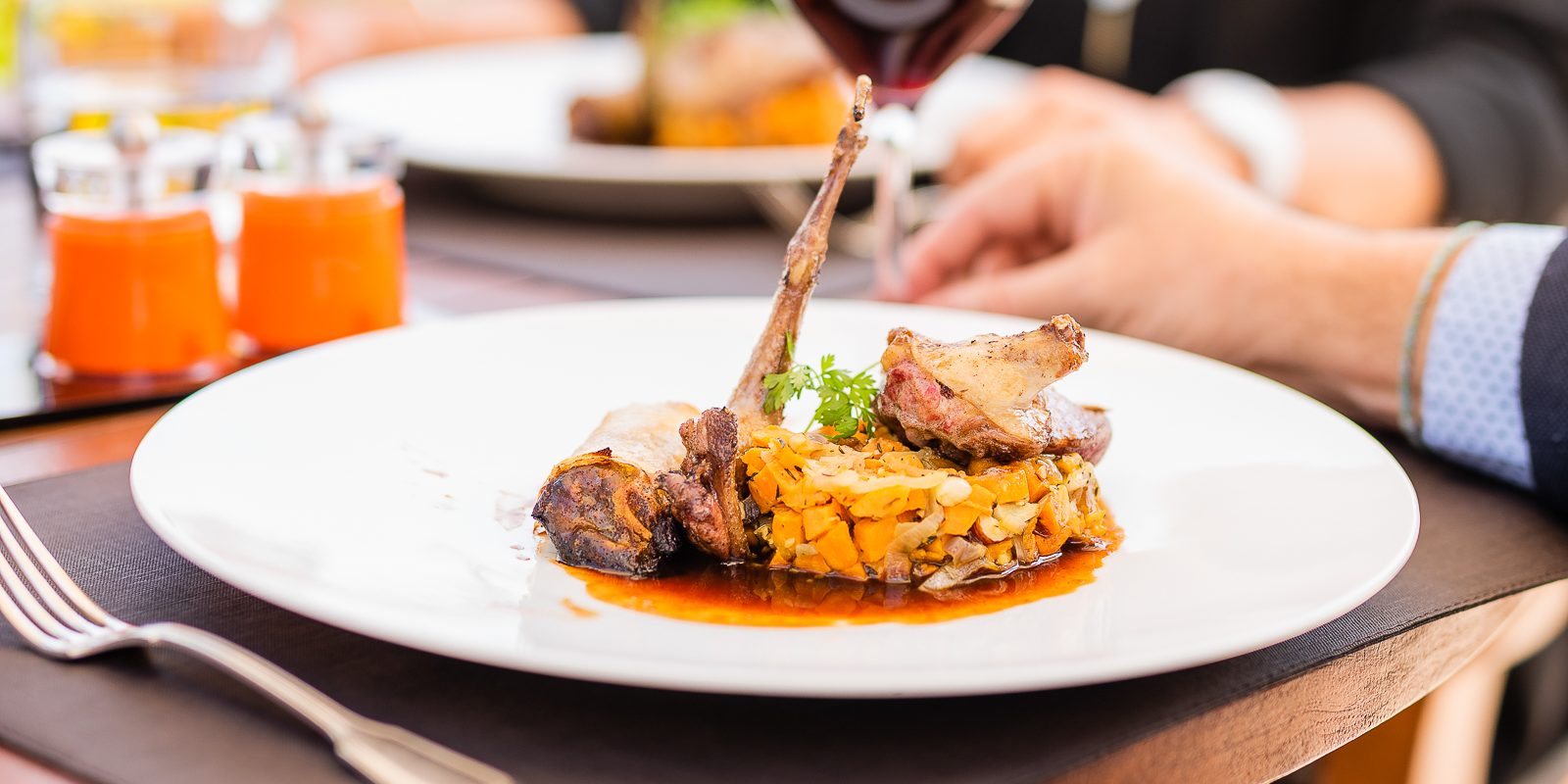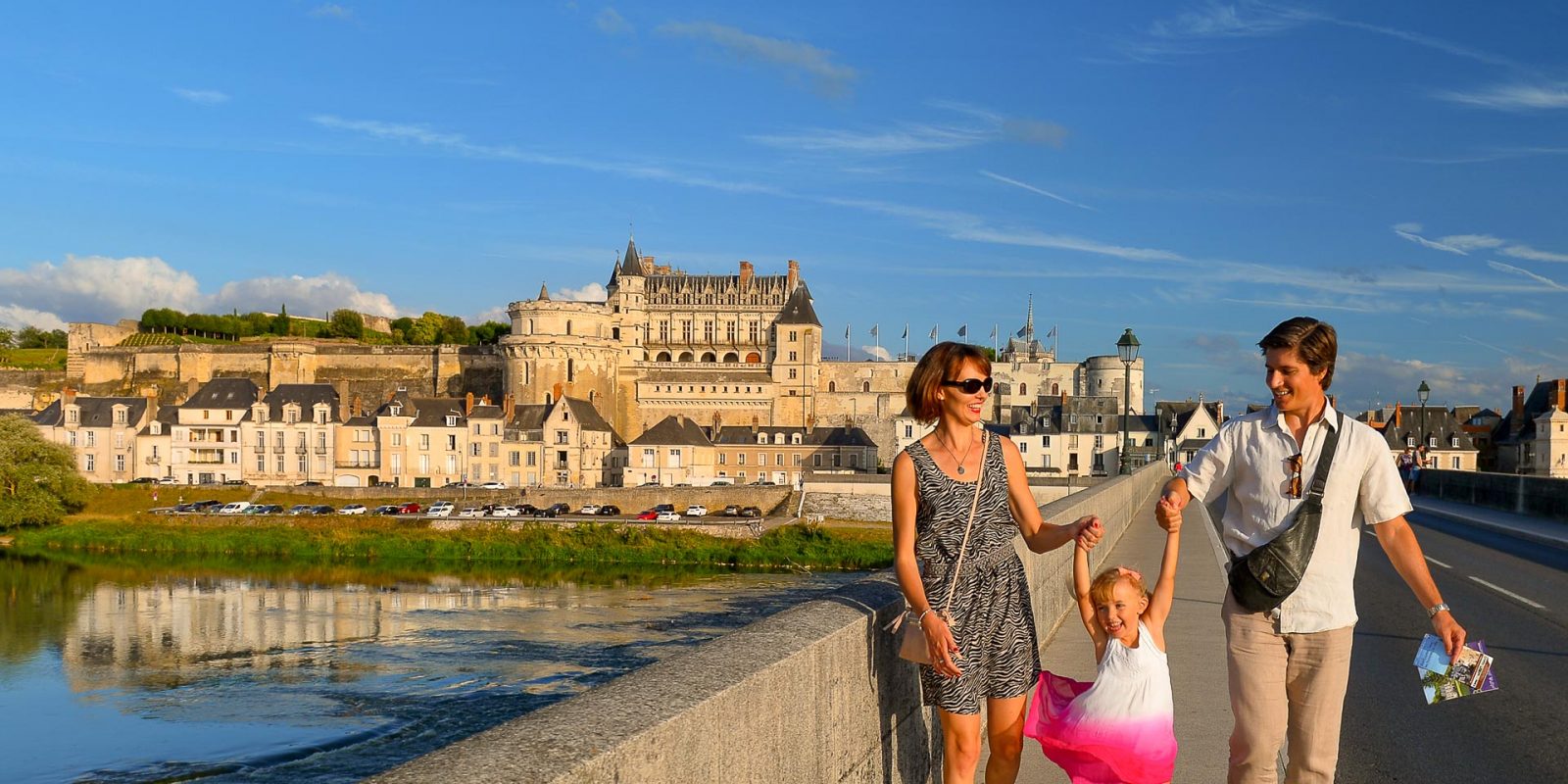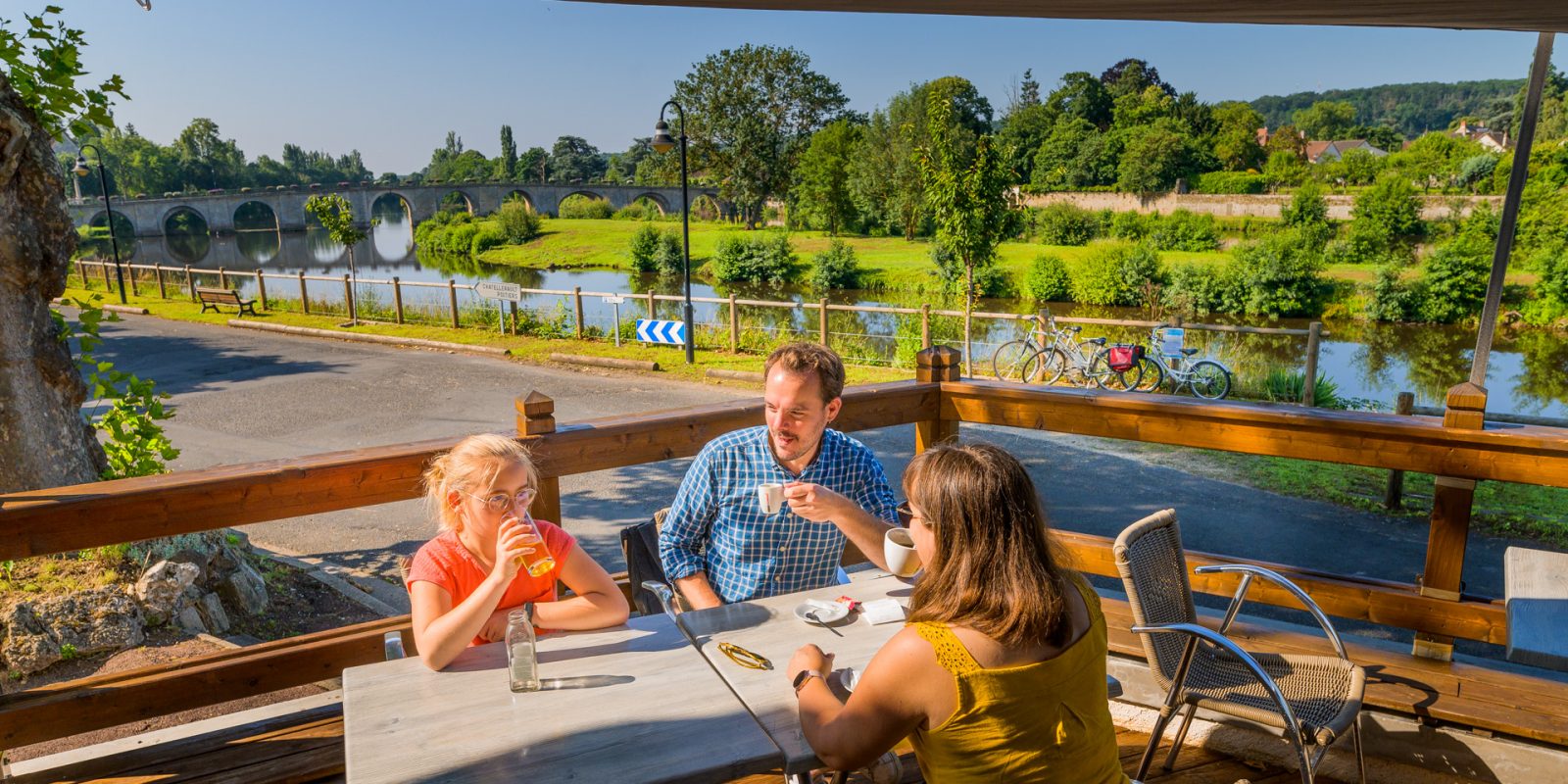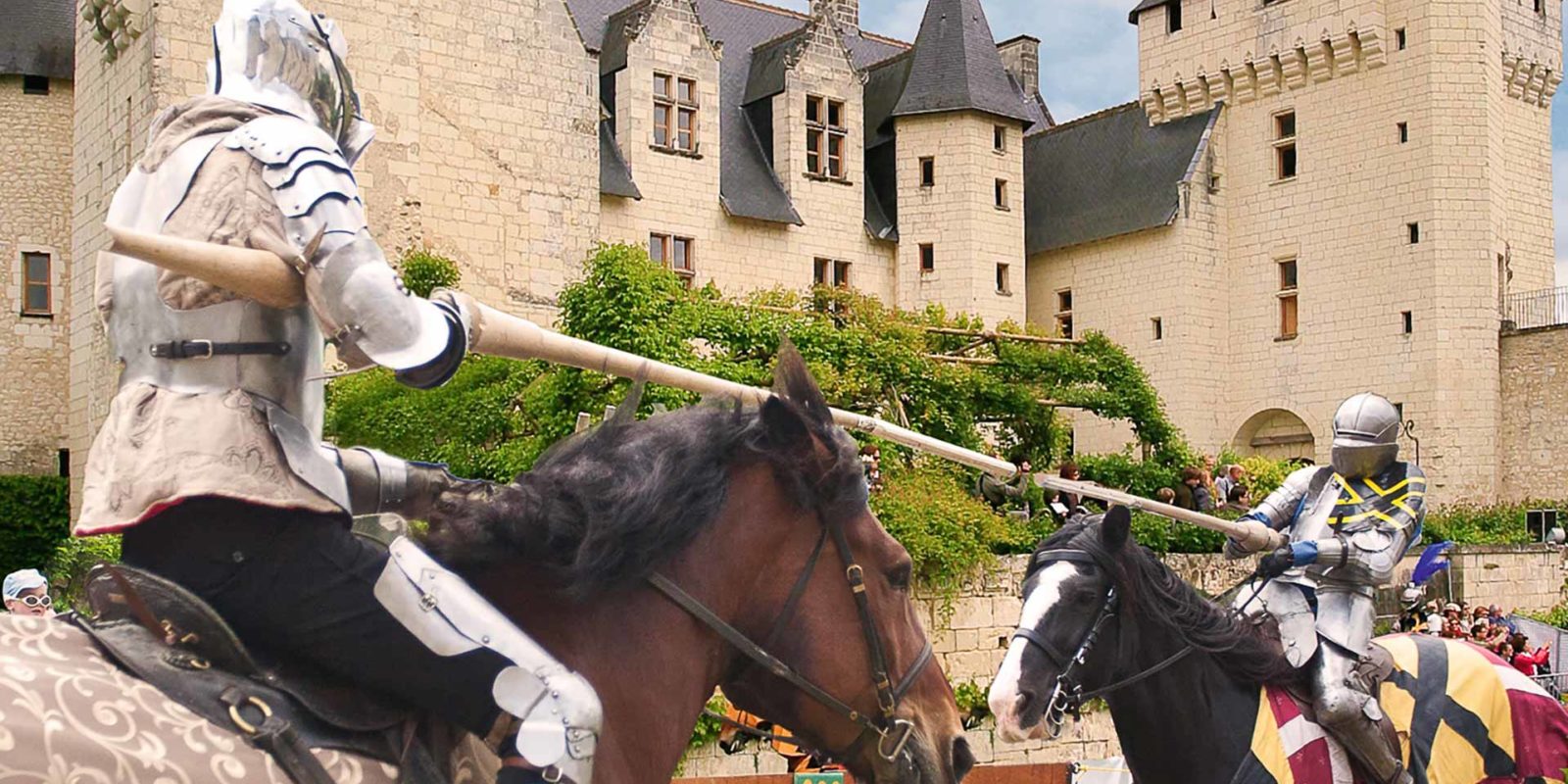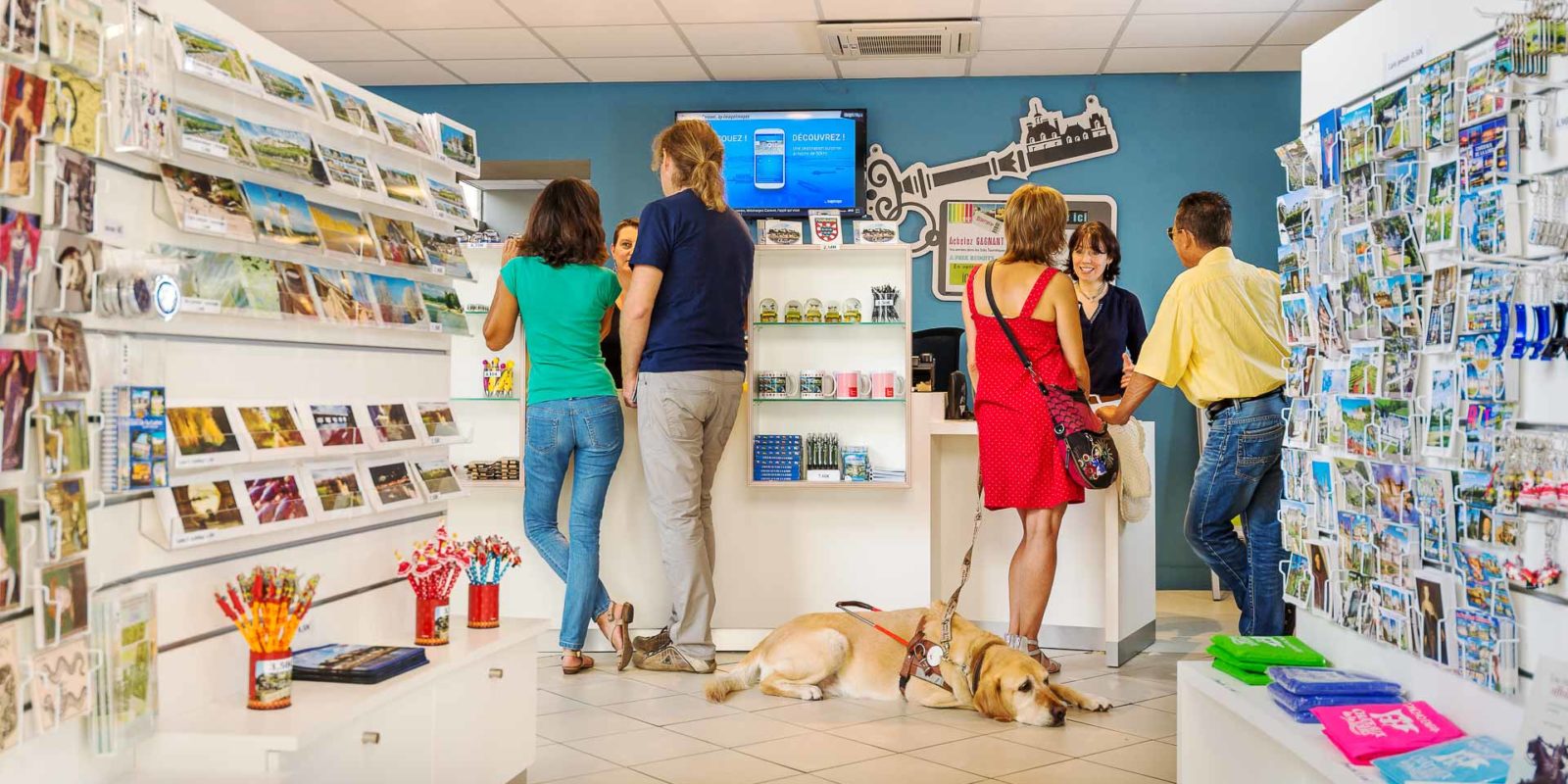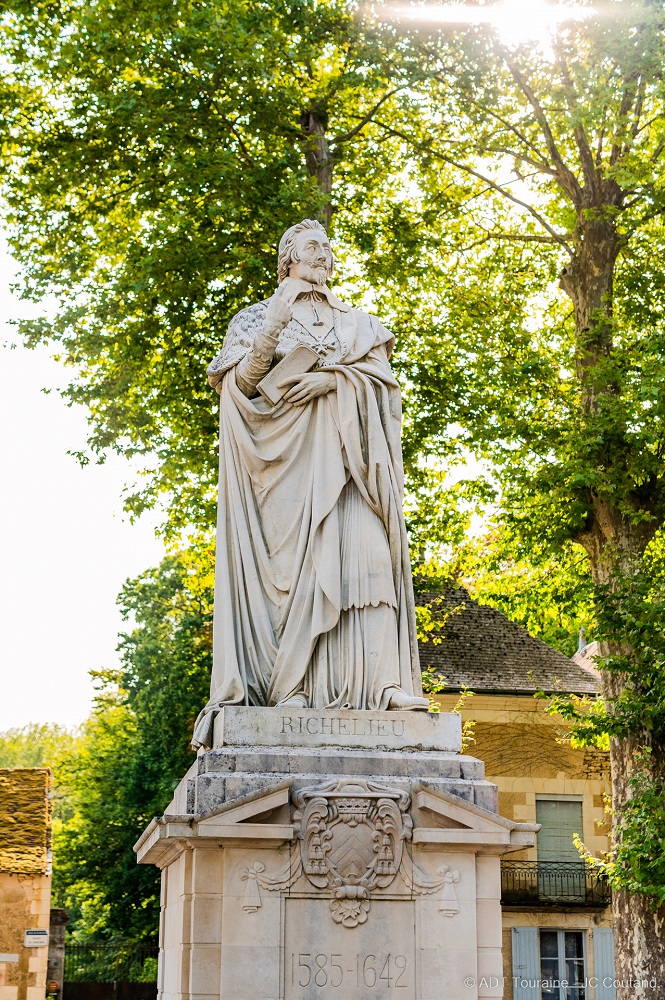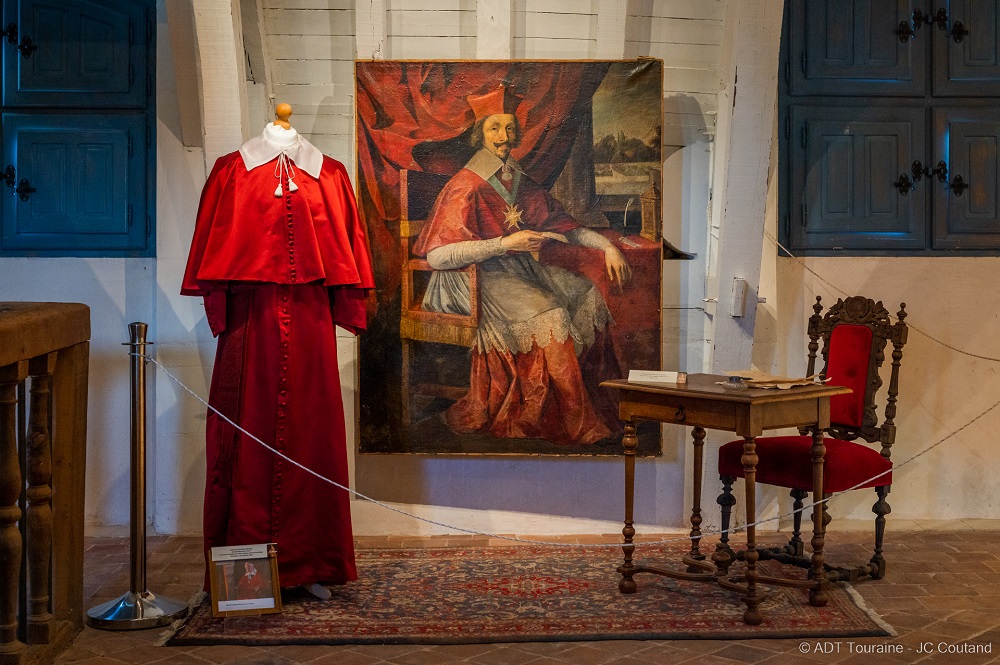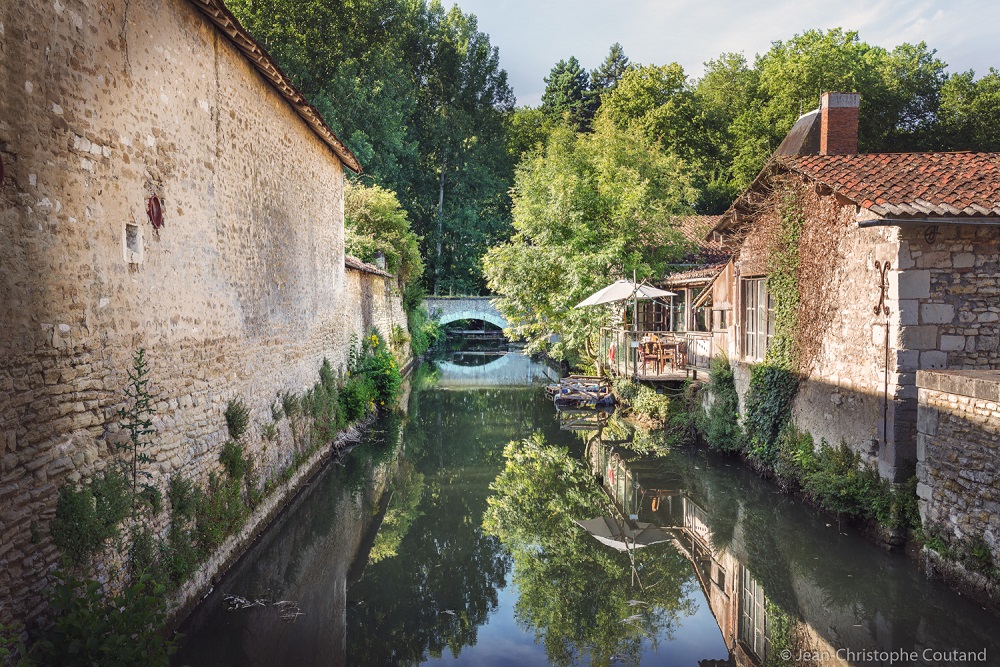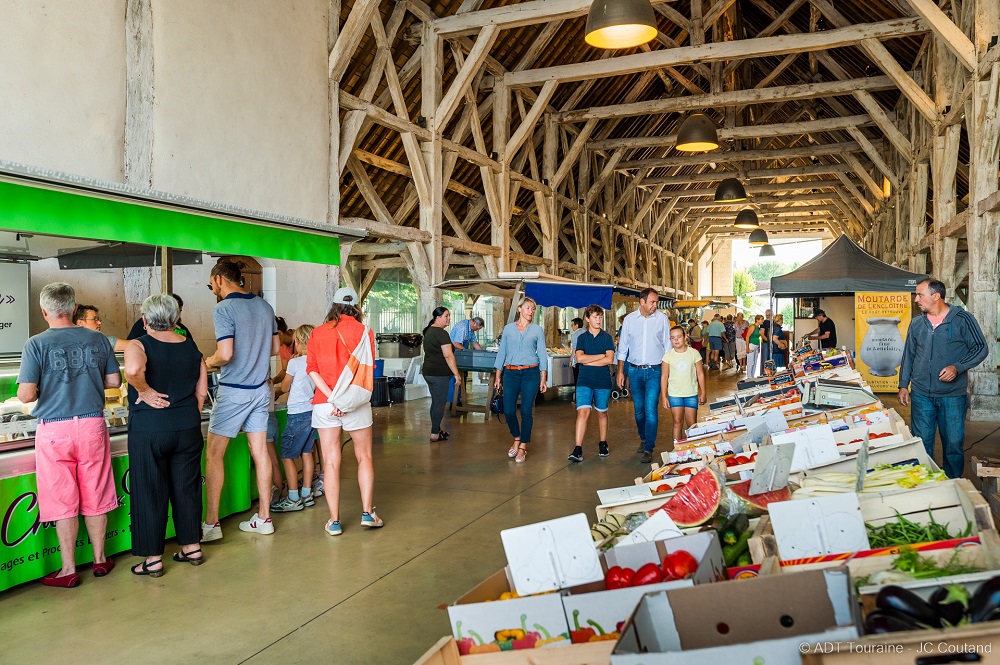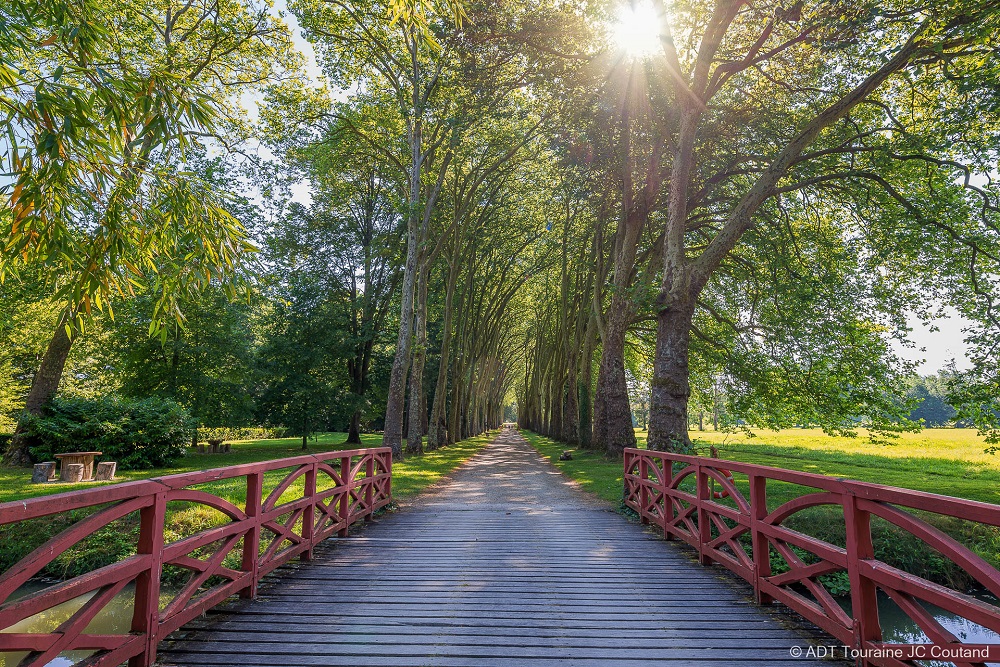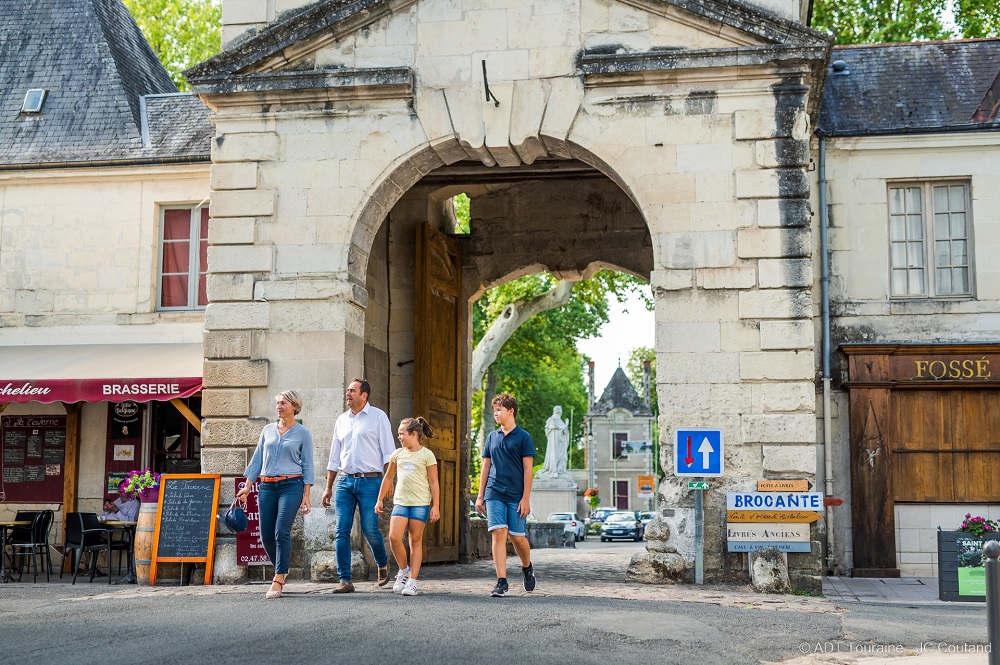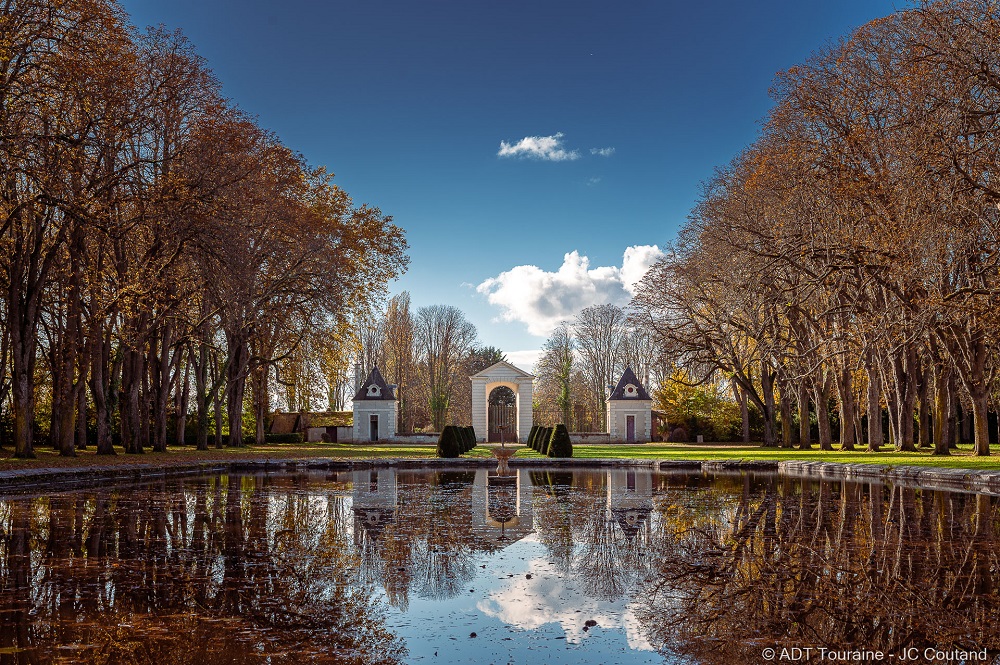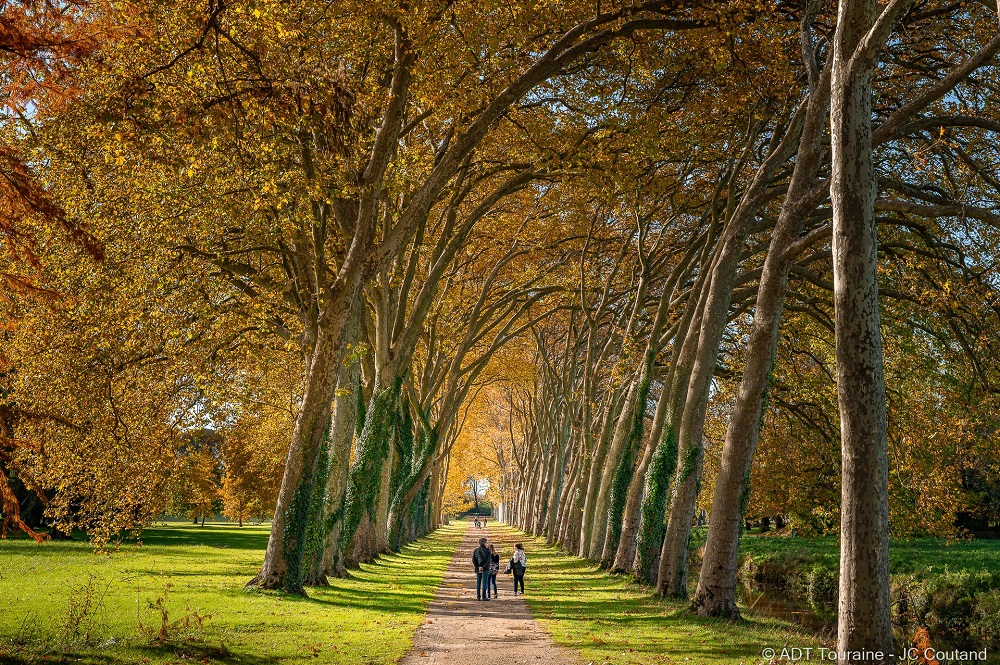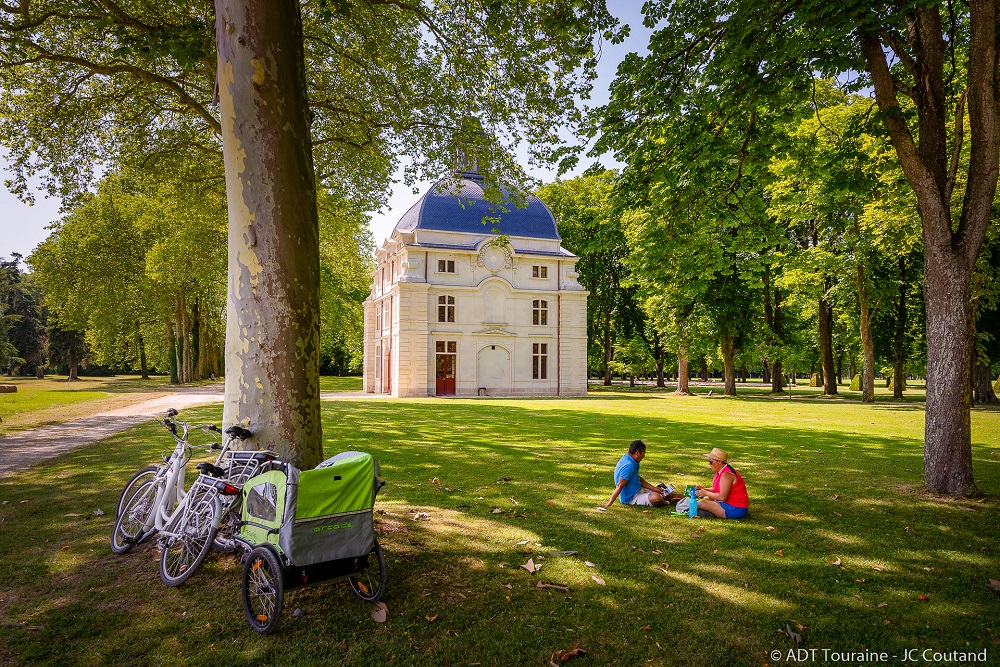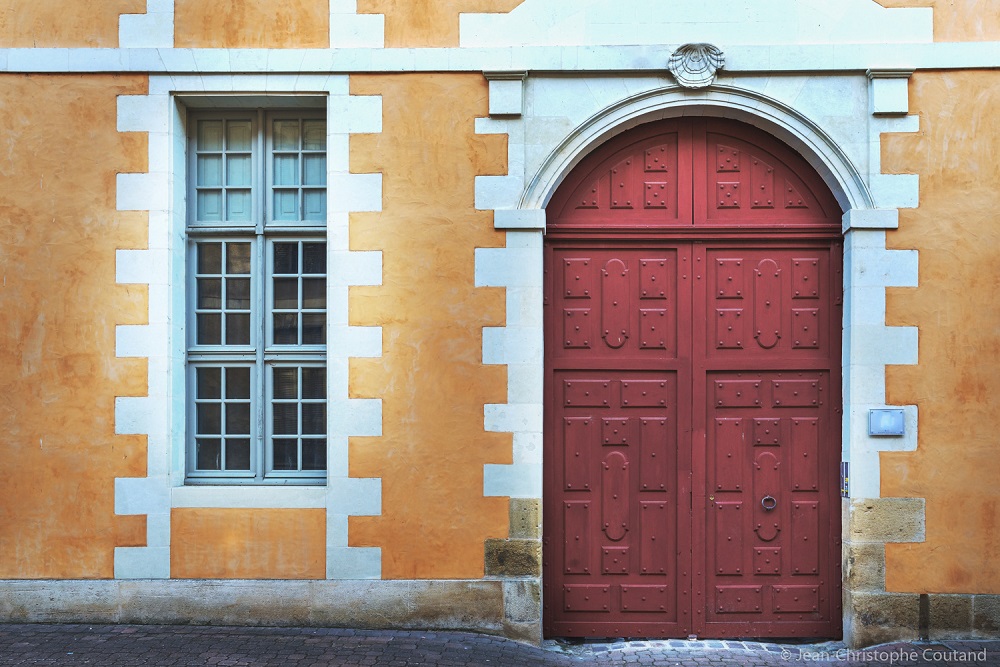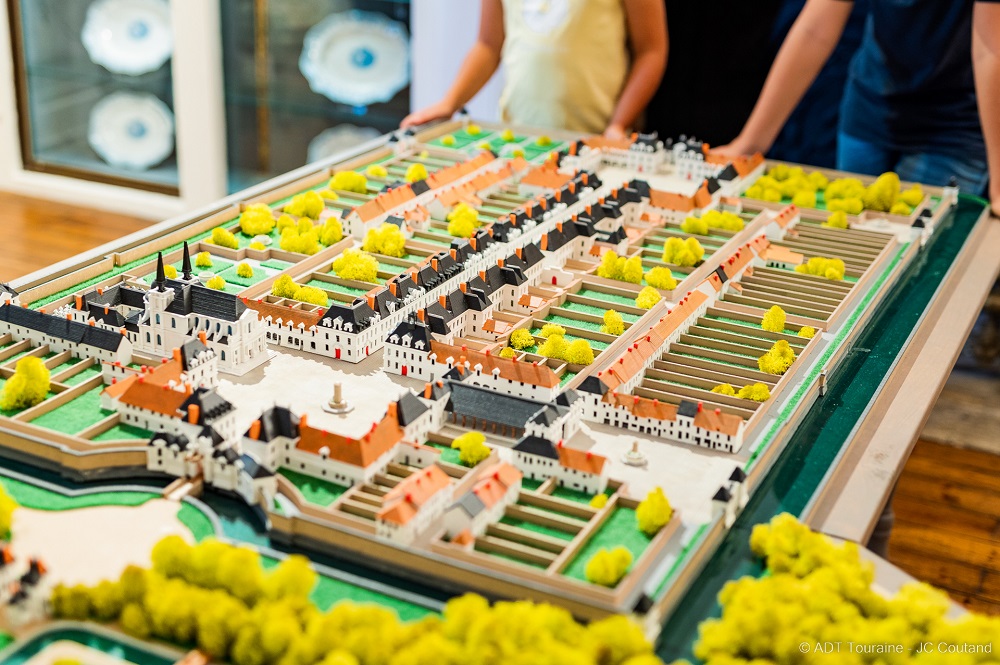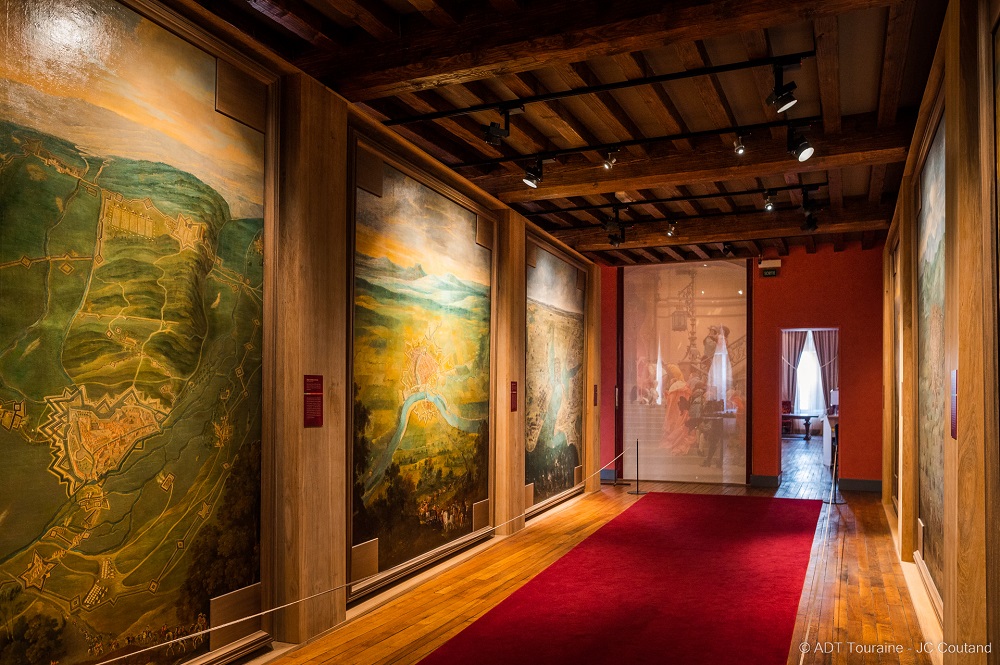The ideal city of Cardinal de Richelieu
When the weather is fine, cyclotourists arrive in clusters at the end of the morning. Starting from Chinon, they followed the pretty green way which allows them to reach the Ideal City of Richelieu in about twenty kilometers. Ideal? The humanist movement, which appeared during the Renaissance, focused on the organization of city life, imagining models of urbanism that perfectly met the needs of daily life. Thus, on the lands of his ancestors, at the limit of Touraine and Poitou, Cardinal de Richelieu built a real palace and a town… his town!
The Cardinal of Richelieu
In the region of the Loire castles, the Middle Ages and the Renaissance have marked the identity of the territory. But the city of Richelieu gives the opportunity to evoke the 17th century. Appointed Bishop of Luçon (Vendée) in 1606 by Henri IV, Armand Jean du Plessis de Richelieu patiently began his political ascension, supported by Marie de Médicis, who became Queen Mother at the death of the king. If the relationship with the young Louis XIII is not easy, he nevertheless managed to impose himself in the spheres of power. Appointed Cardinal in 1622 by Pope Gregory XV, he joined the King’s Council two years later.
The king’s “red eminence” was thus directly responsible for the fight against the influence of the Protestants within the borders (he successfully undertook the siege of La Rochelle, their stronghold), while at the same time supporting certain Protestant states outside the kingdom in order to counteract the power of the Habsburgs! Another front: he worked for the development of the royal power to the detriment of the nobility, which earned him many enmities. His physical protection had to be provided by musketeers, made famous by the French writer Alexandre Dumas.
The Sorbonne, the Palais Royal and the Cité of Richelieu!
In addition to his political role, the Cardinal of Richelieu leaves as a legacy these 3 architectural achievements, all led by Jacques Lemercier.
If unfortunately, it is no longer possible to discover the great castle (unfortunately destroyed in the 19th century, which is said to have inspired Louis XIV for Versailles) erected at the same time as the new town, a very nice walk awaits you nevertheless in the alleys of the 1,236-acre park, along the Mable (diverted river), and along the streets of this Small City of Character. The symmetrical grid layout impresses as much as the 28 mansions (designed to accommodate the notables accompanying Richelieu and the King) and the large market square. Moreover, a beautiful food market is held there every Friday morning, including under the pretty halls, in front of the Notre Dame de l’Assomption church.
But to fully understand the place, we can only advise you to follow a guided tour proposed by the Tourist Office, or to push the door of the Museum of Richelieu and the Espace Richelieu. Among the numerous information to discover, you will learn for example that to populate his new city, the Cardinal had obtained from the king a tax exemption. Or that no less than 2,000 workers worked on this unique masterpiece of 17th century urban planning. Another remarkable point: Richelieu is a fortified city, with ramparts and moats, which can be accessed through three monumental gates.
Finally, in the middle of all these discoveries (including the pretty Arts’ Buste gallery), you will certainly appreciate a lunch break. Le Puits Doré (an address welcoming travelers since 1632!), Le Cardinal Inn, Le Fossé Saint Ange, La Fleur de Lys (tea room) or La Taverne offer you a wide choice.
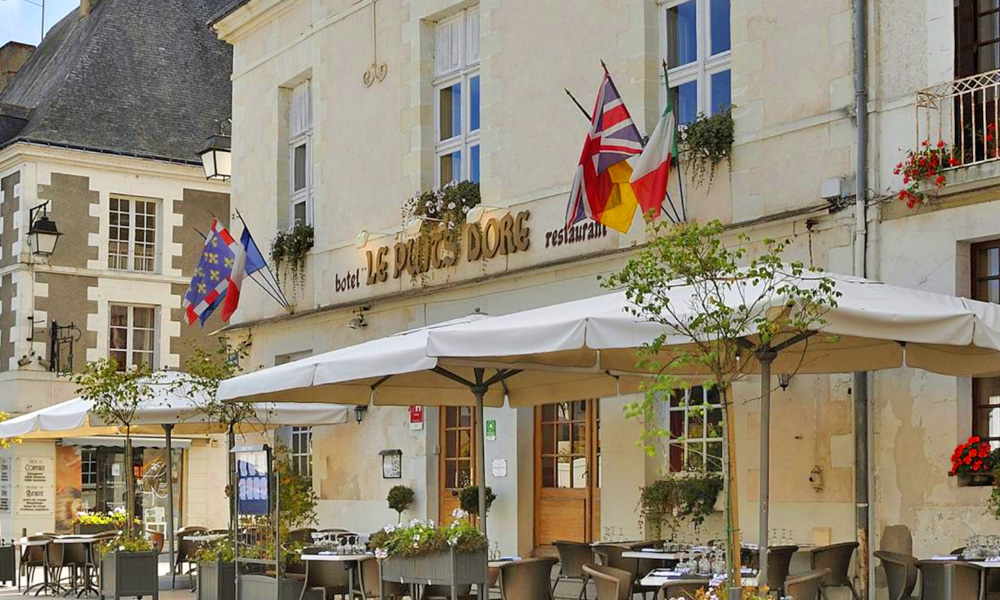
Le Puits Doré, an institution in the heart of Richelieu.
Staying in Richelieu
- Hotel Le Puits Doré
- Le Relais du Plessis tourist residence (with spa, bike rental…)
- Camping le Cardinal (cottage)
- Gite le Logis de l’explorateur (2 persons)
- Bed and Breakfast Le jardin Andrinople
- Gite for groups of the station of Ligré (on the green way)
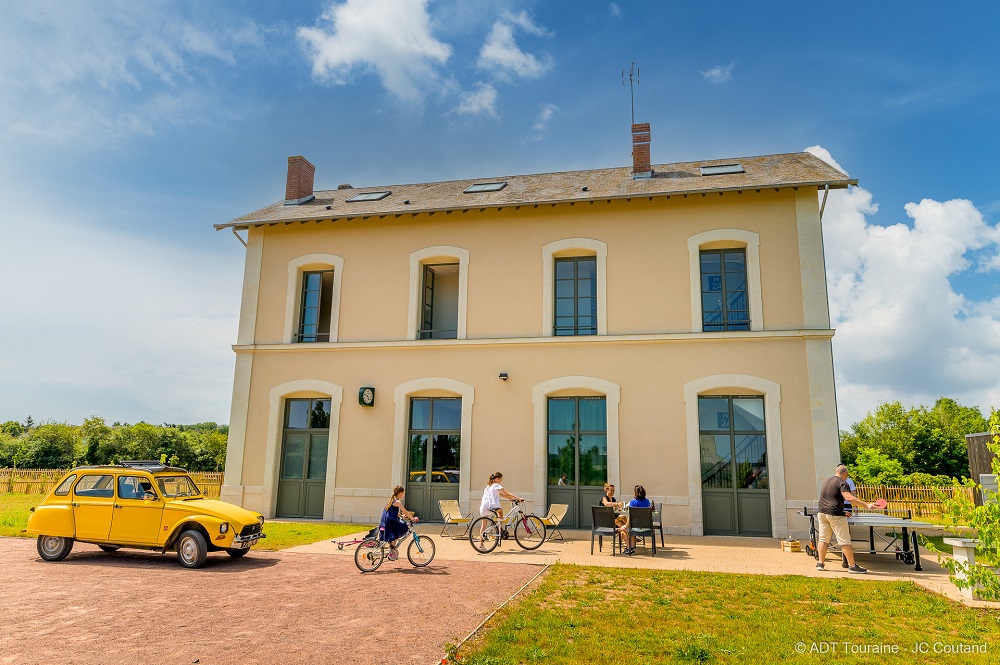
Gite for groups of the station of Ligré.
Major events
- All summer long: Richelieu en arts (ephemeral stalls of art craftsmen)
- June: Antiques fair
- July: Cape and Sword Festival (every 2 years)
- Early August: Music Festival (classical repertoire)
To discover in the surroundings
Visits: the city of Chinon and its royal fortress, the gardens of the Château du Rivau, the Royal Abbey of Saint-Michel de Bois-Aubry, the Saffron of Val, the Baron de la Truffe, the Saut au Loup wine estate of Eric Sentier…
In the open air: hiking from the Sainte Chapelle de Champigny-sur-Veude, interpretation trail of the Assay pond (Sensitive Natural Area, also developed since the 17th century), the Richelieu Chinon greenway and the associated bicycle loops (between Mable and Veude, between vineyards and Veude, along the Veude), Latitude Nordique (cani kart and cani rando with Huskys).
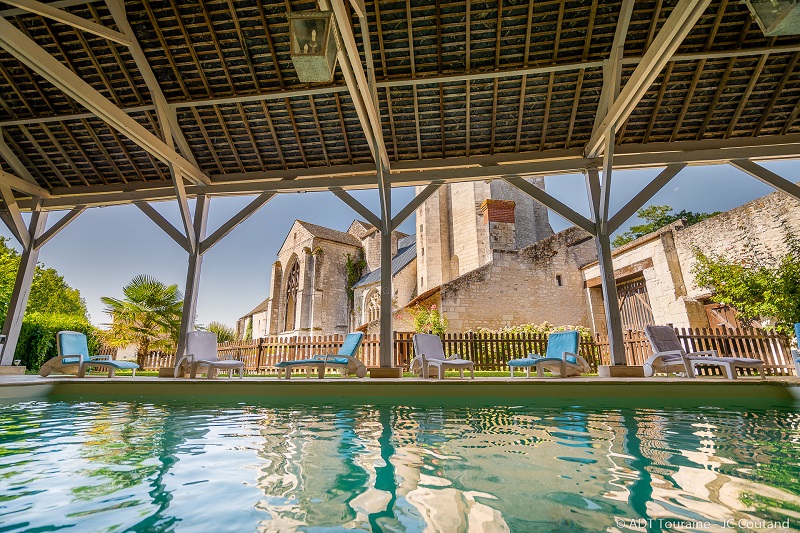
The Abbey Saint-Michel de Bois-Aubry, which also offers two gites.
Locate Richelieu
The town of Le Cardinal is located in the Loire-Anjou-Touraine regional nature park, halfway between Tours and the Futuroscope.
